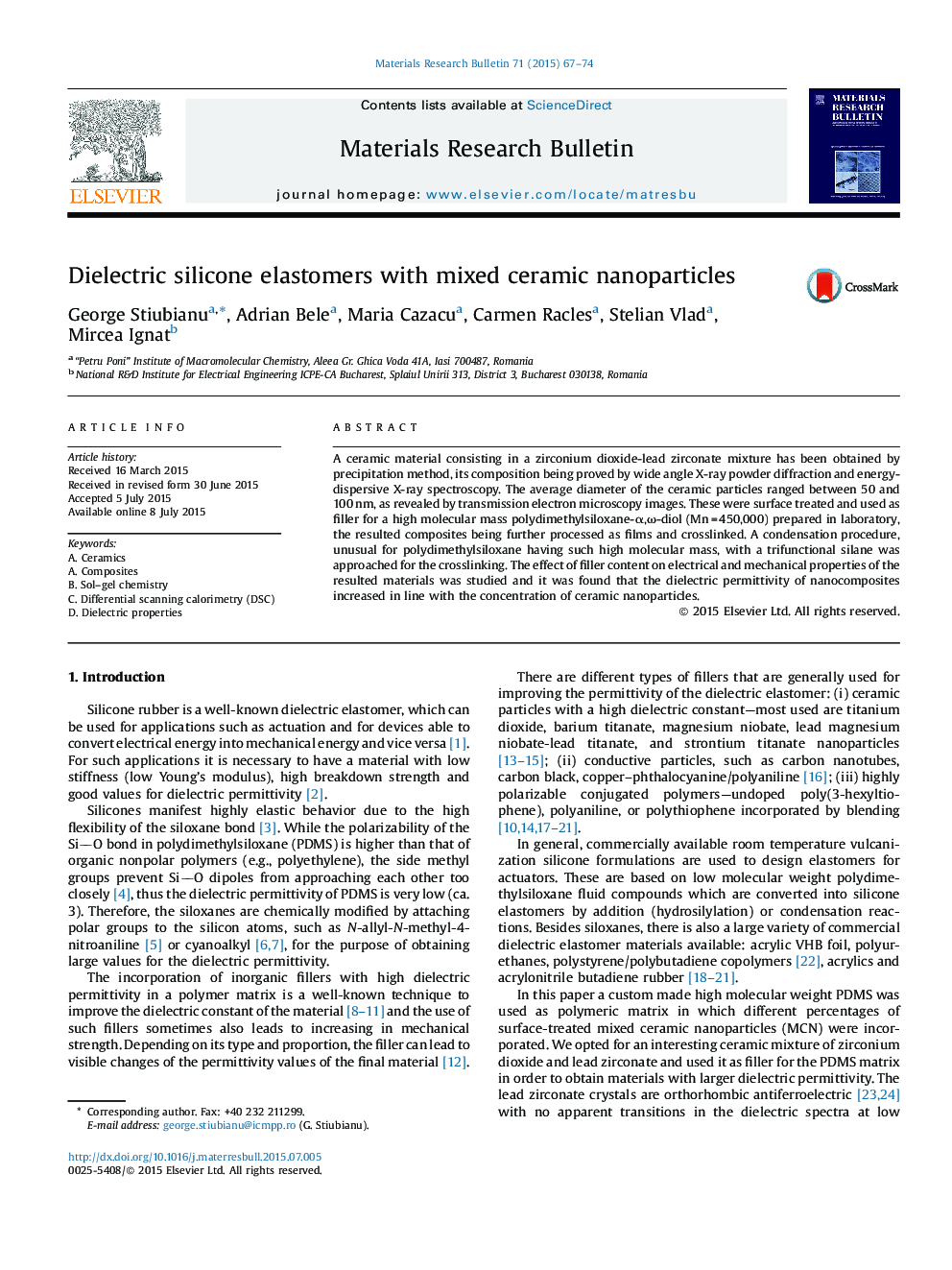| Article ID | Journal | Published Year | Pages | File Type |
|---|---|---|---|---|
| 1487235 | Materials Research Bulletin | 2015 | 8 Pages |
•Composite ceramics nanoparticles (MCN) with zirconium dioxide and lead zirconate.•Dielectric elastomer films wDith PDMS matrix and MCN as dielectric filler.•Hydrophobic character—water resistant and good flexibility specific to siloxanes.•Increased value of dielectric constant with the content of MCN in dielectric films.•Increased energy output from uniaxial deformation of the dielectric elastomer films.
A ceramic material consisting in a zirconium dioxide-lead zirconate mixture has been obtained by precipitation method, its composition being proved by wide angle X-ray powder diffraction and energy-dispersive X-ray spectroscopy. The average diameter of the ceramic particles ranged between 50 and 100 nm, as revealed by transmission electron microscopy images. These were surface treated and used as filler for a high molecular mass polydimethylsiloxane-α,ω-diol (Mn = 450,000) prepared in laboratory, the resulted composites being further processed as films and crosslinked. A condensation procedure, unusual for polydimethylsiloxane having such high molecular mass, with a trifunctional silane was approached for the crosslinking. The effect of filler content on electrical and mechanical properties of the resulted materials was studied and it was found that the dielectric permittivity of nanocomposites increased in line with the concentration of ceramic nanoparticles.
Graphical abstractFigure optionsDownload full-size imageDownload as PowerPoint slide
